Remote Sensing Open Access Journal of MDPI: Current Progress and Future Vision
1. Performance Parameters of Various Remote Sensing International Journals
- Journal Impact Factor (JIF);
- Eigen Factor Score;
- Normalized Eigen Factor Score;
- Article Influence Score; and
- Total Cites.
- The number of times an article published in the journal in past 5 years (2014–2018) is cited in Journal Citation Reports© (JCR) (2019);
- Citations by taking into consideration which journals cite it. Highly cited journals are given higher weightage and less cited journals are given lesser weightage; and
- Citations by discounting references from one article in a journal to another article from the same journal. So, the journal self-citation is excluded from the Eigenfactor.
2. Remote Sensing Open Access Journal Publications
2.1. Publication Time
2.2. Special Issue (SI)
3. Editorial Board
4. Competition Analysis
5. A Bibliographic analysis of Remote Sensing Open Access Journal of MDPI
6. Current Achievements and the Way Forward
Funding
Acknowledgments
Conflicts of Interest
References
- Clarivate Analytics. The Clarivate Analytics Impact Factor. 2020. Available online: https://clarivate.com/webofsciencegroup/essays/impact-factor/ (accessed on 13 July 2020).
- West, J.D.; Jensen, M.C.; Dandrea, R.J.; Gordon, G.J.; Bergstrom, C.T. Author-Level Eigenfactor Metrics: Evaluating the Influence of Authors Institutions and Countries within the SSRN Community. J. Am. Soc. Inf. Sci. Tec. 2013, 64, 787–801. [Google Scholar] [CrossRef]
- West, J.D.; Bergstrom, T.C.; Bergstrom, C.T. The Eigenfactor™ Metrics: A network approach to assessing scholarly journals. Coll. Res. Lib. 2010, 71, 236–244. [Google Scholar] [CrossRef]
- West, J.D.; Bergstrom, T.C.; Bergstrom, C.T. Big Macs and Eigenfactor Scores: Don’t Let Correlation Coefficients Fool You. J. Am. Soc. Inf. Sci. Tec 2010, 61, 1800–1807. [Google Scholar] [CrossRef]
- Zhang, Y.; Thenkabail, P.S.; Wang, P. A Bibliometric Profile of the Remote Sensing Open Access Journal Published by MDPI between 2009 and 2018. Remote Sens. 2019, 11, 91. [Google Scholar] [CrossRef]
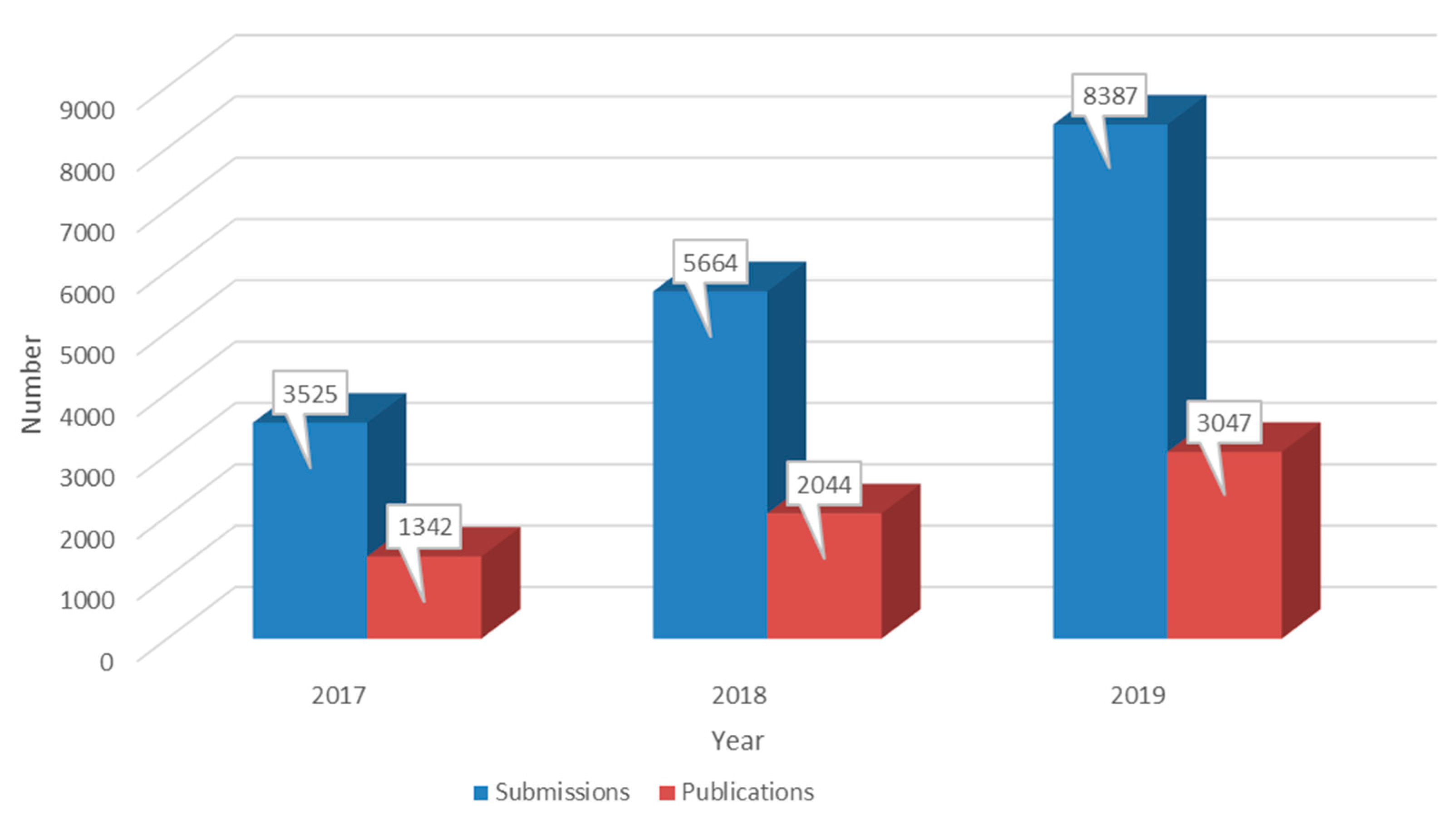

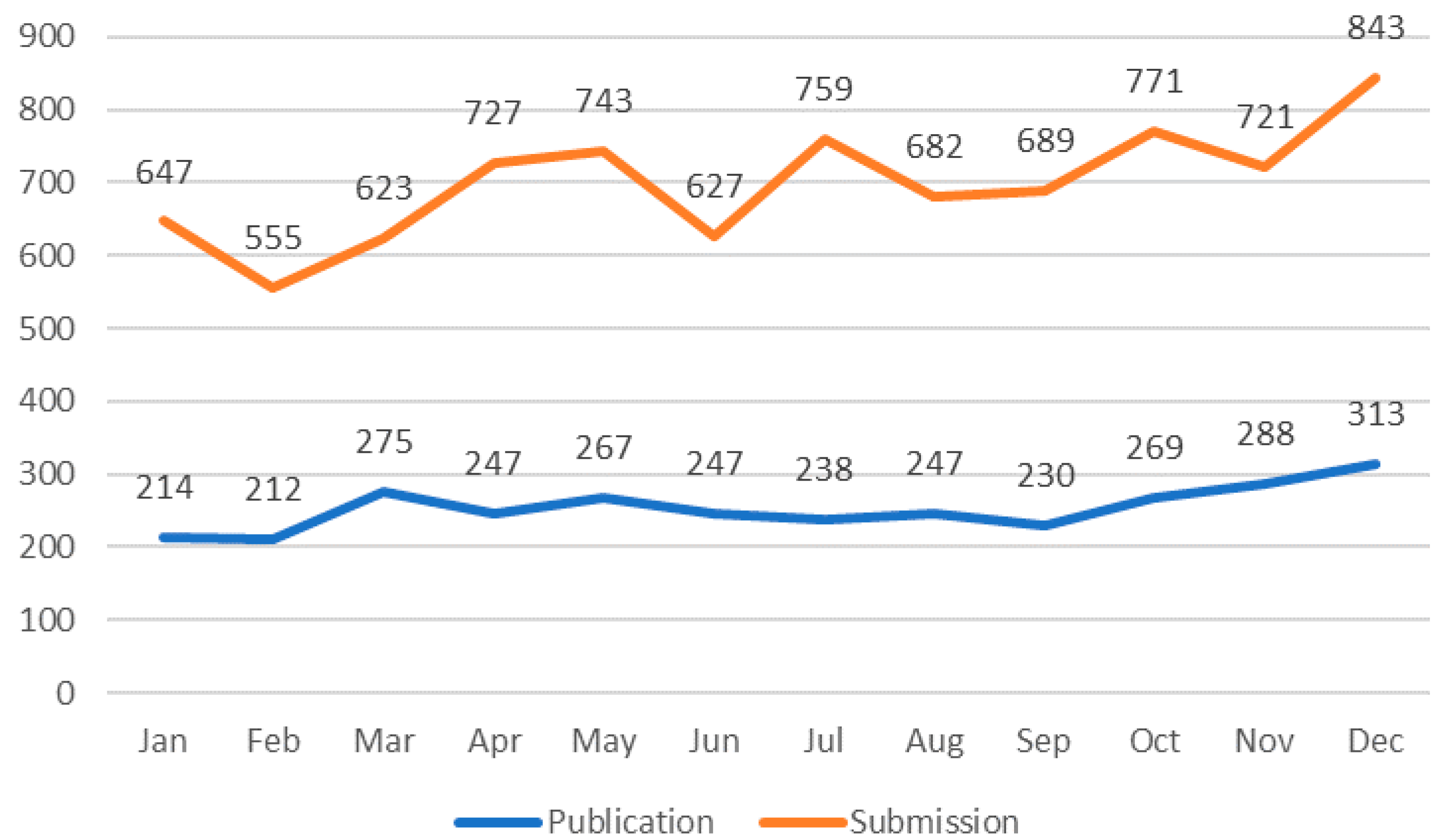

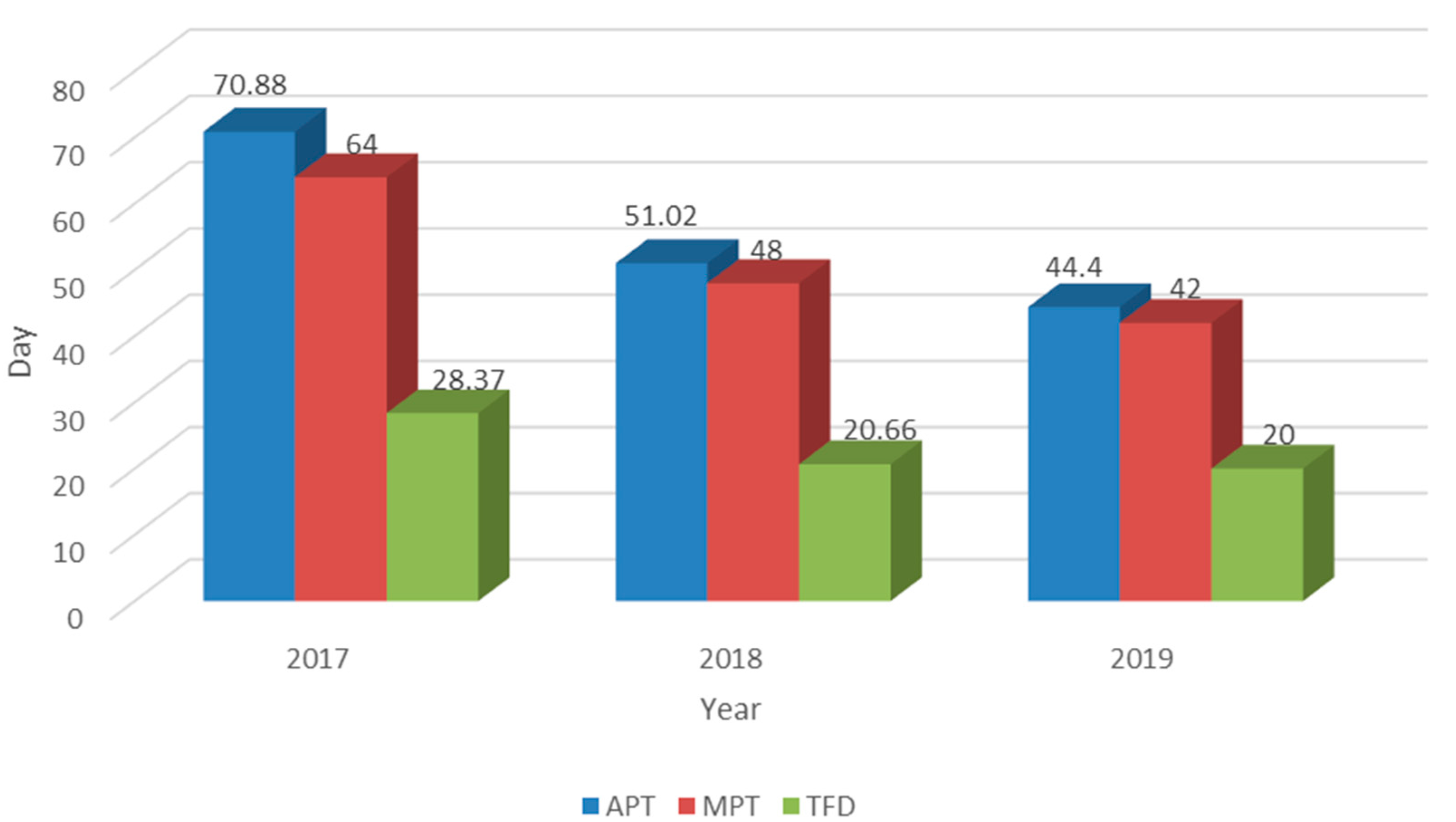
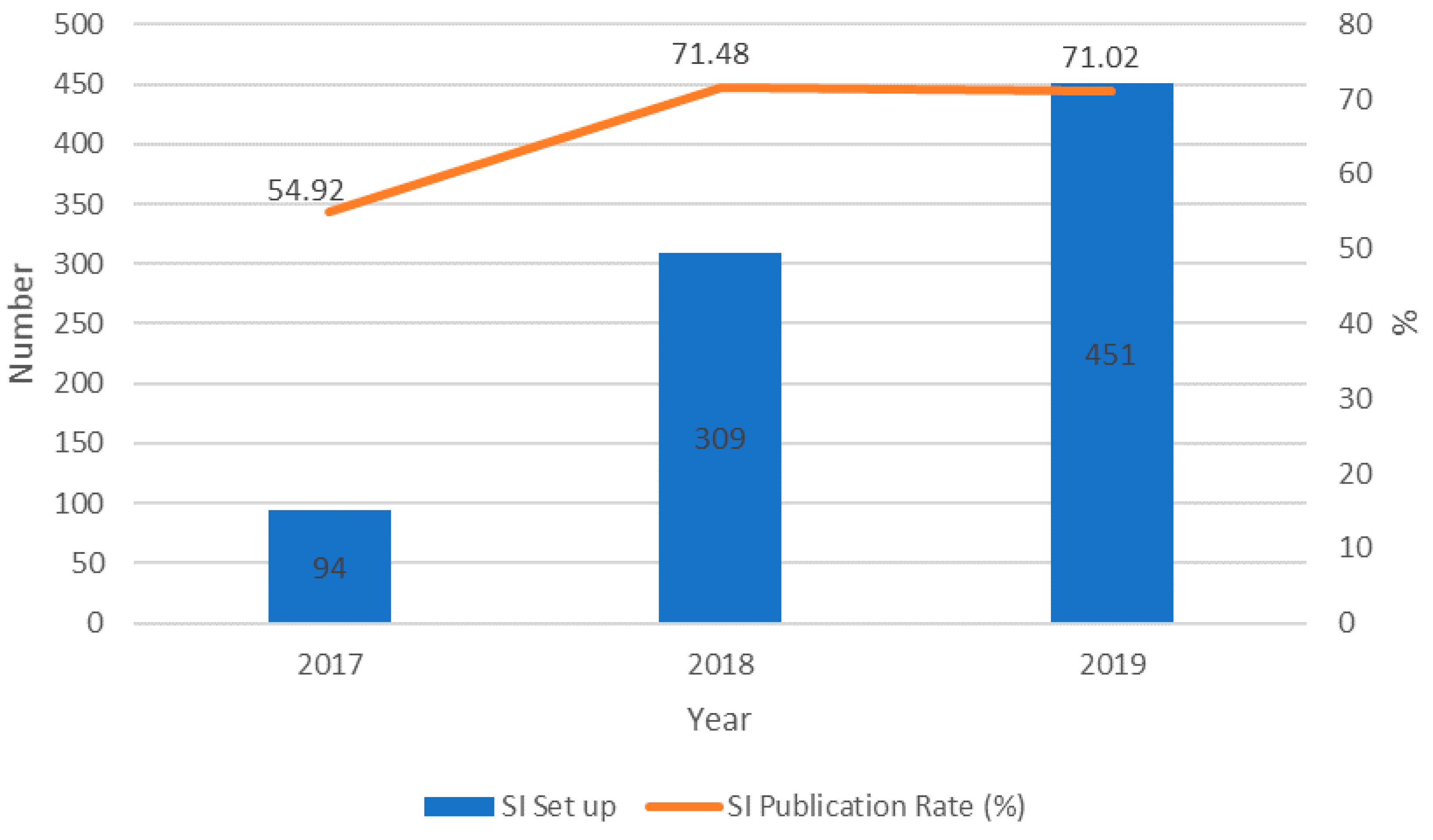
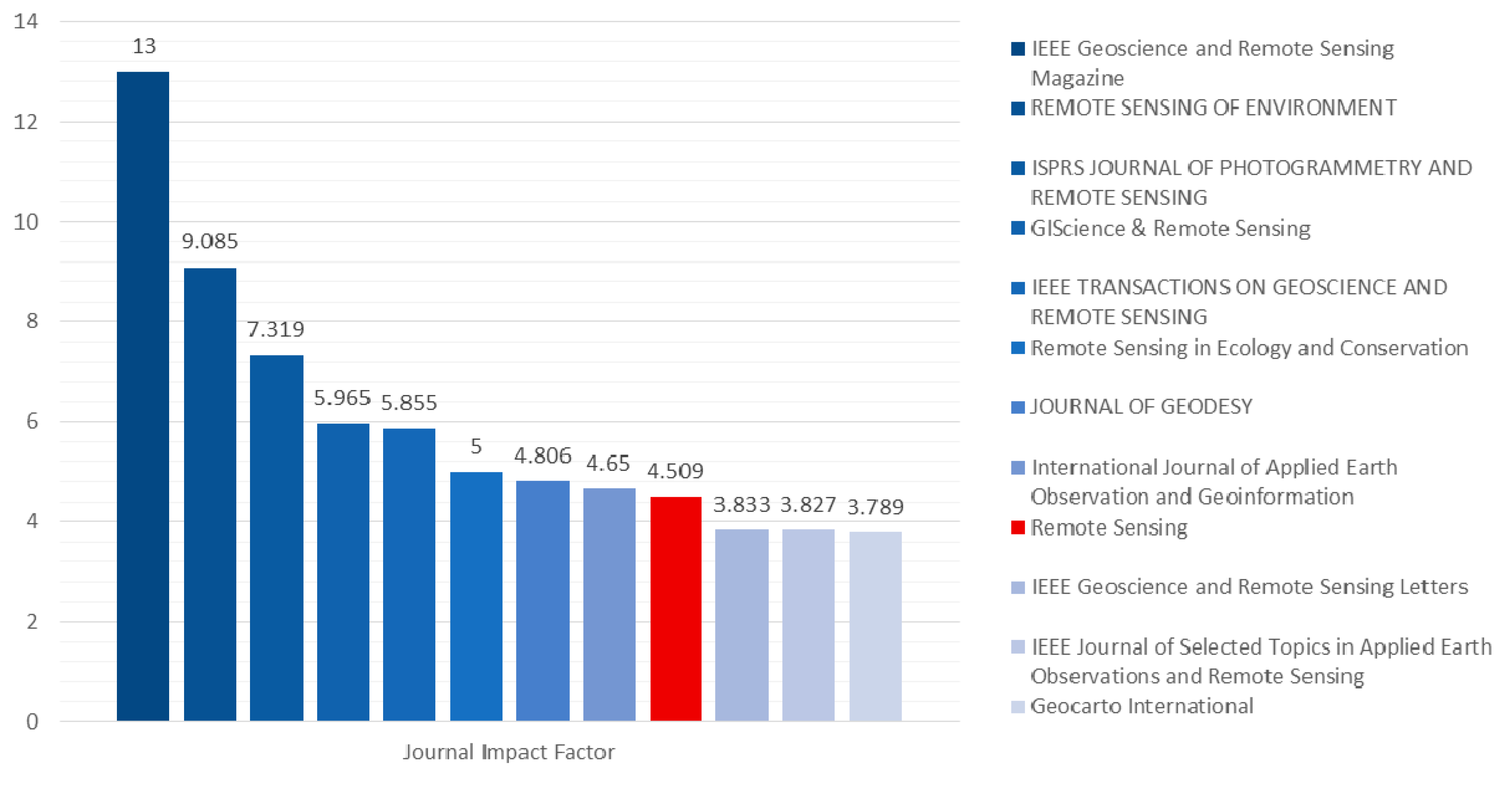
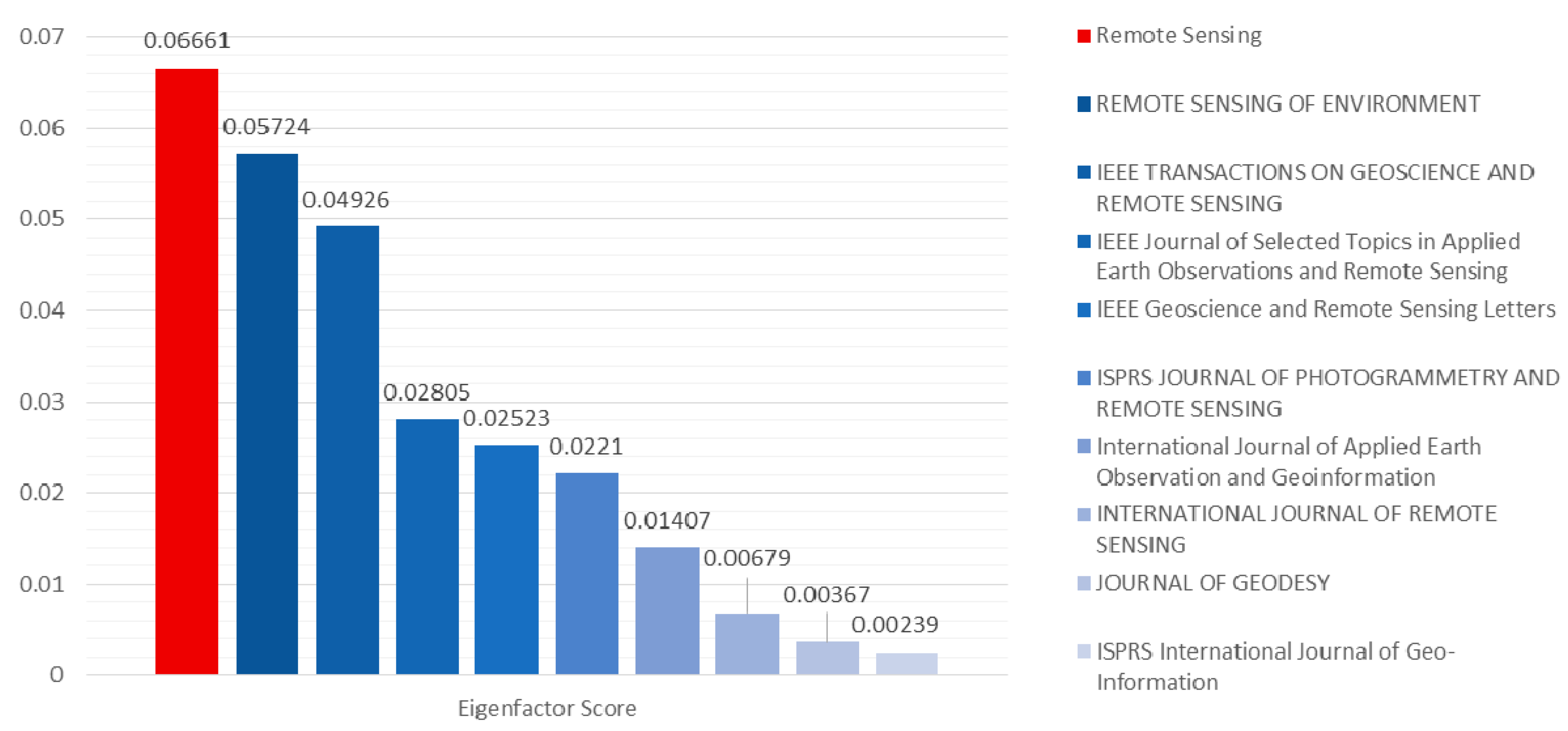

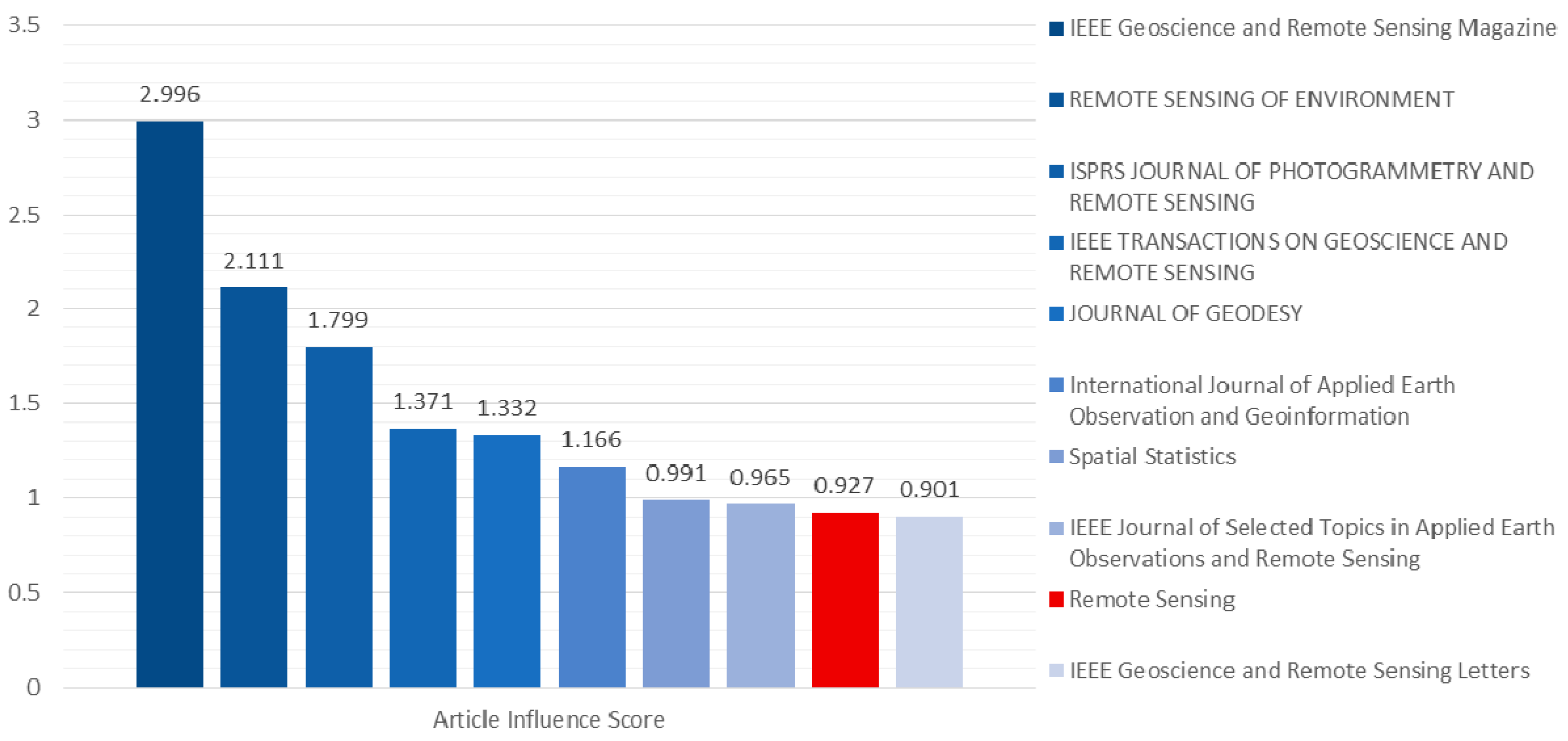
| Rank | Full Journal Title | Journal Impact Factor A | Eigenfactor Score B | Normalized Eigenfactor C Score | Article Influence Score D | Total Cites | Increase in Cites in 2019 Compared to 2018 | |
|---|---|---|---|---|---|---|---|---|
| 2019 | 2018 | |||||||
| 1 | IEEE Geoscience and Remote Sensing Magazine | 13 | 0.00367 | 0.44774 | 2.996 | 1304 | 952 | 352 |
| 2 | Remote Sensing of Environment | 9.085 | 0.05724 | 6.984 | 2.111 | 62697 | 54482 | 8215 |
| 3 | ISPRS Journal of Photogrammetry and Remote Sensing | 7.319 | 0.0221 | 2.6965 | 1.799 | 13946 | 11576 | 2370 |
| 4 | GIScience & Remote Sensing | 5.965 | 0.00209 | 0.25605 | 0.795 | 1447 | 1183 | 264 |
| 5 | IEEE Transactions on Geoscience and Remote Sensing | 5.855 | 0.04926 | 6.0106 | 1.371 | 46565 | 43741 | 2824 |
| 6 | Remote Sensing in Ecology and Conservation | 5 | 0.00137 | 0.16745 | Not Available | 440 | N/A | - |
| 7 | Journal of Geodesy | 4.806 | 0.00679 | 0.82872 | 1.332 | 6000 | 5092 | 908 |
| 8 | International Journal of Applied Earth Observation and Geoinformation | 4.65 | 0.01407 | 1.71709 | 1.166 | 9072 | 7384 | 1688 |
| 9 | Remote Sensing | 4.509 | 0.06661 | 8.1265 | 0.927 | 36083 | 23567 | 12516 |
| 10 | IEEE Geoscience and Remote Sensing Letters | 3.833 | 0.02523 | 3.07858 | 0.901 | 13781 | 12217 | 1564 |
| 11 | IEEE Journal of Selected Topics in Applied Earth Observations and Remote Sensing | 3.827 | 0.02805 | 3.42246 | 0.965 | 11579 | 9671 | 1908 |
| 12 | Geocarto International | 3.789 | 0.00239 | 0.29276 | 0.515 | 1908 | 1380 | 528 |
| 13 | GPS Solutions | 3.61 | 0.0051 | 0.623 | 0.859 | 3690 | 2871 | 819 |
| 14 | International Journal of Digital Earth | 3.097 | 0.00262 | 0.31982 | 0.678 | 1718 | 1512 | 206 |
| 15 | International Journal of Remote Sensing | 2.976 | 0.01385 | 1.68975 | 0.568 | 24676 | 22212 | 2464 |
| 16 | European Journal of Remote Sensing | 2.808 | 0.00166 | 0.20335 | 0.482 | 889 | 644 | 245 |
| 17 | Remote Sensing Letters | 2.298 | 0.004 | 0.48836 | 0.534 | 2075 | 1636 | 439 |
| 18 | ISPRS International Journal of Geo-Information | 2.239 | 0.00666 | 0.81371 | 0.396 | 3730 | 2196 | 1534 |
| 19 | Canadian Journal of Remote Sensing | 2.126 | 0.00186 | 0.22761 | 0.678 | 2465 | 2326 | 139 |
| 20 | Photogrammetric Record | 1.867 | 0.00069 | 0.08445 | 0.532 | 821 | 871 | −50 |
| 21 | Navigation-Journal of the Institute of Navigation | 1.7 | 0.00086 | 0.10557 | 0.42 | 741 | 650 | 91 |
| 22 | Survey Review | 1.66 | 0.00091 | 0.11126 | 0.295 | 752 | 618 | 134 |
| 23 | Spatial Statistics | 1.656 | 0.00336 | 0.41055 | 0.991 | 661 | 504 | 157 |
| 24 | Journal of Spatial Science | 1.405 | 0.00057 | 0.07054 | 0.391 | 356 | 356 | 0 |
| 25 | PFG-Journal of Photogrammetry Remote Sensing and Geoinformation Science | 1.395 | 0.00014 | 0.01821 | 0.275 | 61 | 39 | 22 |
| 26 | Journal of Applied Remote Sensing | 1.36 | 0.00447 | 0.54547 | 0.272 | 2753 | 2521 | 232 |
| 27 | Marine Geodesy | 1.322 | 0.00096 | 0.11746 | 0.431 | 1084 | 1042 | 42 |
| 28 | Radio Science | 1.305 | 0.00334 | 0.40796 | 0.445 | 4888 | 5484 | −596 |
| 29 | Photogrammetric Engineering and Remote Sensing | 1.265 | 0.00335 | 0.40987 | 0.79 | 7000 | 7002 | −2 |
| 30 | Journal of the Indian Society of Remote Sensing | 0.997 | 0.00133 | 0.16248 | 0.188 | 1302 | 1013 | 289 |
| SI Title | Guest Editors | Publication |
|---|---|---|
| Advances of Multi-Temporal Remote Sensing in Vegetation and Agriculture Research | Jiali Shang, Jiangui Liu, Catherine Champagne, Taifeng Dong, John Kovacs | 28 |
| Concurrent Positioning, Mapping and Perception of Multi-Source Data Fusion for Smart Applications | Jingbin Liu, Yuanxi Yang, Juha Hyyppä, Naser El-Sheimy | 21 |
| Convolutional Neural Networks Applications in Remote Sensing | Davide Cozzolino, Raffaele Gaetano, Francescopaolo Sica | 20 |
| Global Navigation Satellite Systems for Earth Observing System | Jianghui Geng, Maorong Ge, Jennifer Haase, Weiping Jiang | 26 |
| High-precision GNSS: Methods, Open Problems and Geoscience Applications | Xingxing Li, Jacek Paziewski, Mattia Crespi | 35 |
| Position | 2018 | 2019 | 2018–2019 Increase |
|---|---|---|---|
| EiC | 1 | 1 | 0 |
| SEiC | 8 | 13 | 5 |
| Advisory Board Member | 3 | 8 | 5 |
| Senior Associate Editor | 4 | 4 | 0 |
| Associate Editor | 30 | 57 | 27 |
| Editorial Board Member | 280 | 605 | 325 |
| Topic Editor | 0 | 17 | 17 |
| Reviewer Board Member | 0 | 1107 | 1107 |
© 2020 by the author. Licensee MDPI, Basel, Switzerland. This article is an open access article distributed under the terms and conditions of the Creative Commons Attribution (CC BY) license (http://creativecommons.org/licenses/by/4.0/).
Share and Cite
Thenkabail, P.S. Remote Sensing Open Access Journal of MDPI: Current Progress and Future Vision. Remote Sens. 2020, 12, 2442. https://doi.org/10.3390/rs12152442
Thenkabail PS. Remote Sensing Open Access Journal of MDPI: Current Progress and Future Vision. Remote Sensing. 2020; 12(15):2442. https://doi.org/10.3390/rs12152442
Chicago/Turabian StyleThenkabail, Prasad S. 2020. "Remote Sensing Open Access Journal of MDPI: Current Progress and Future Vision" Remote Sensing 12, no. 15: 2442. https://doi.org/10.3390/rs12152442
APA StyleThenkabail, P. S. (2020). Remote Sensing Open Access Journal of MDPI: Current Progress and Future Vision. Remote Sensing, 12(15), 2442. https://doi.org/10.3390/rs12152442




